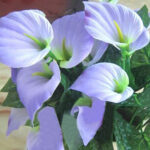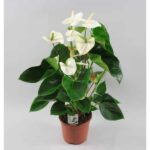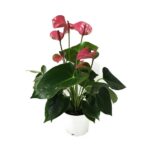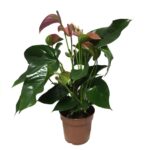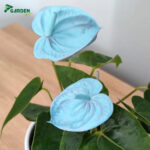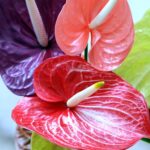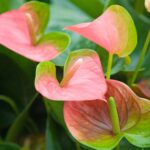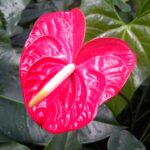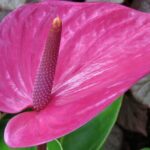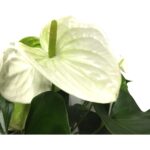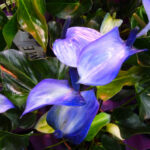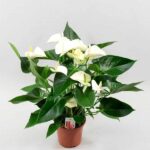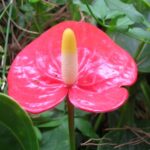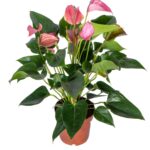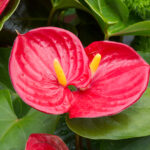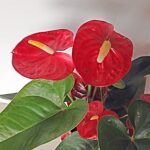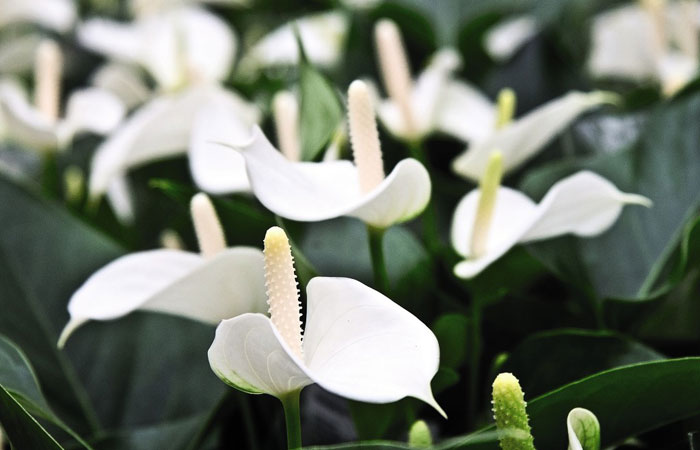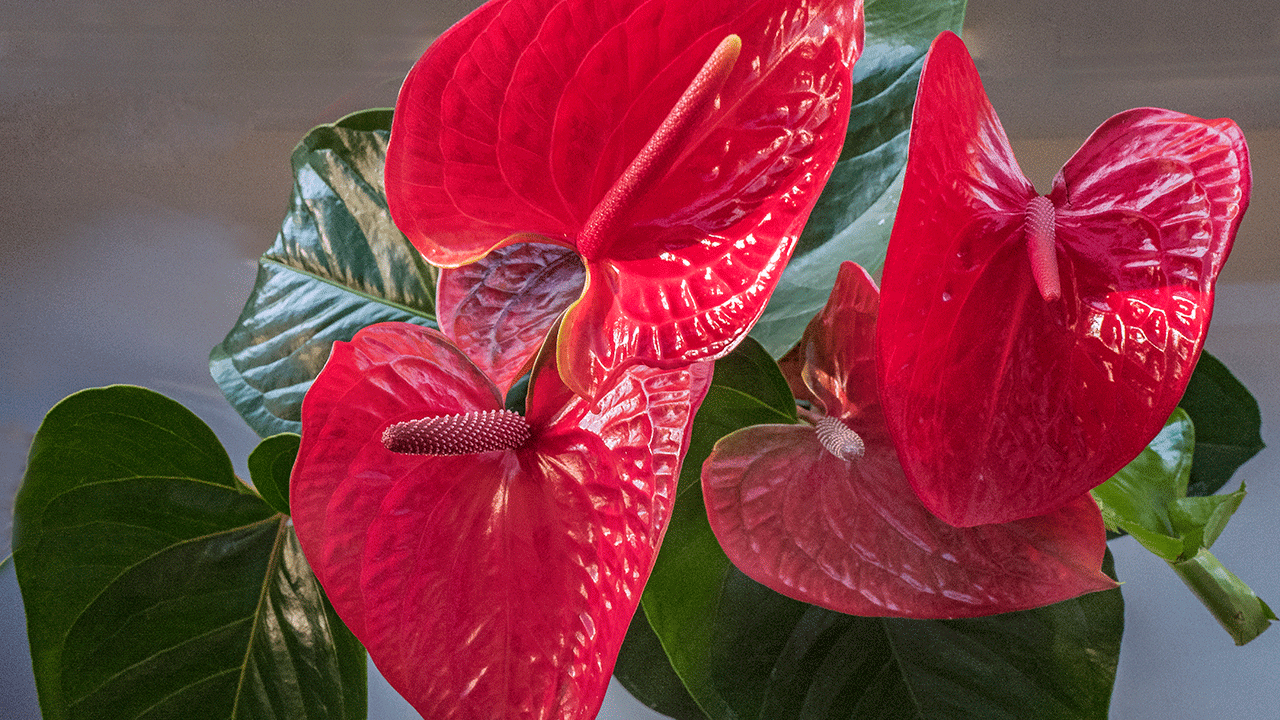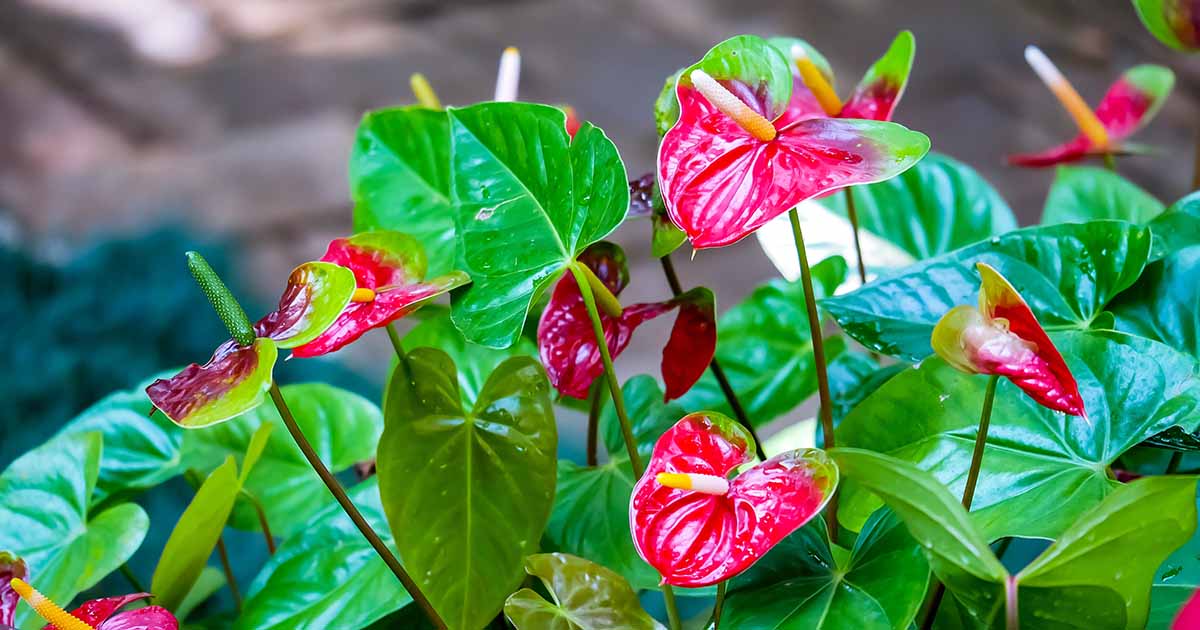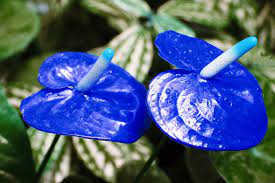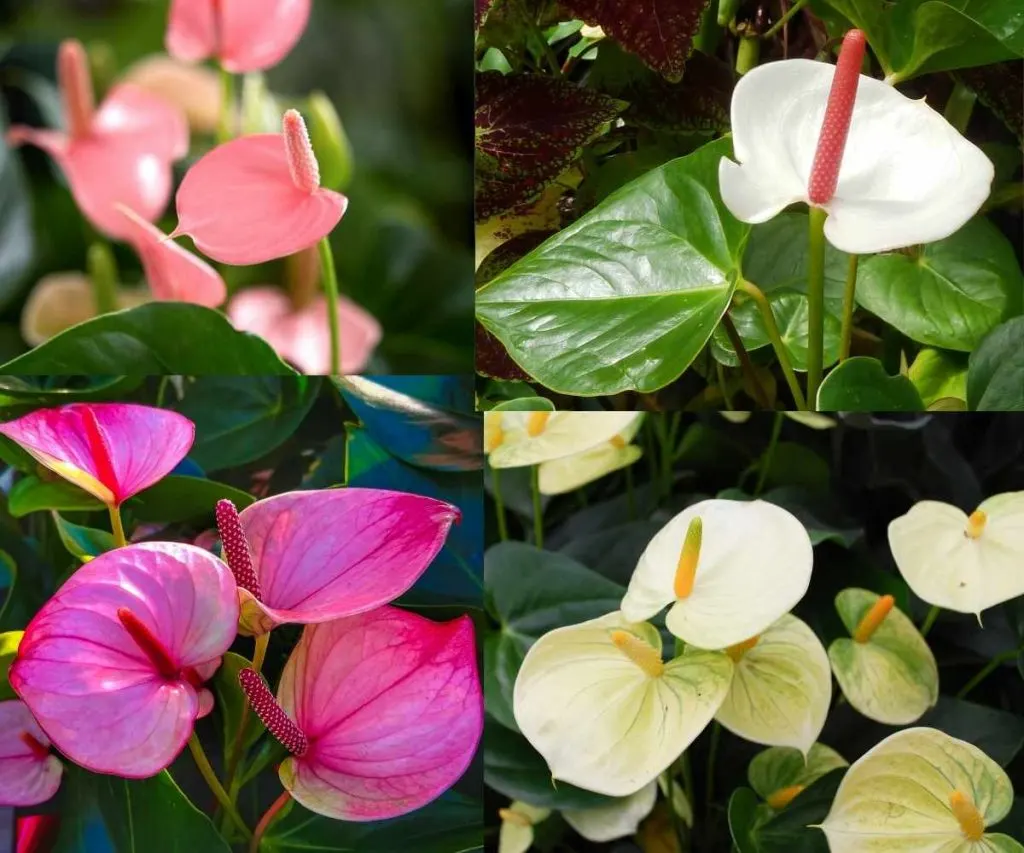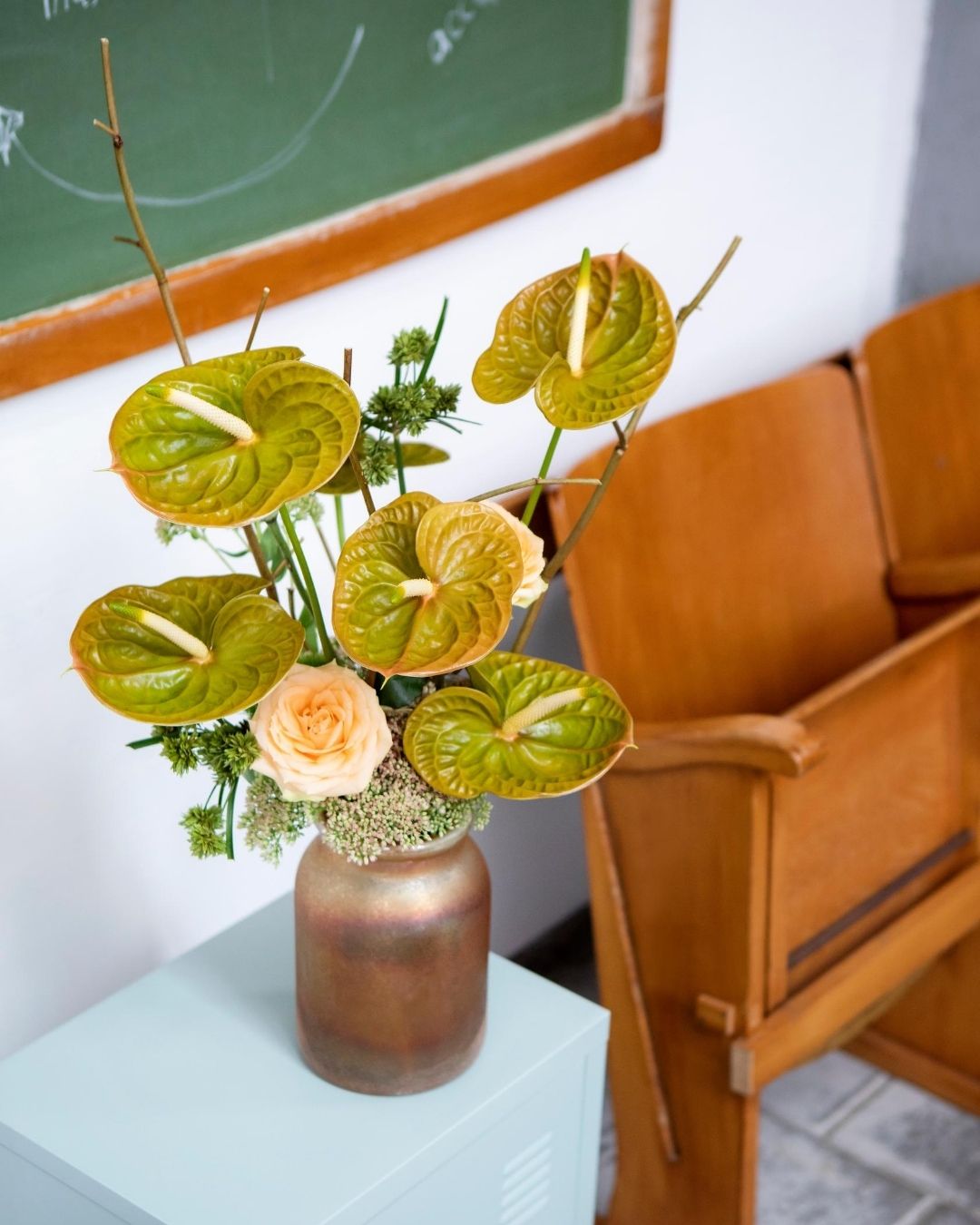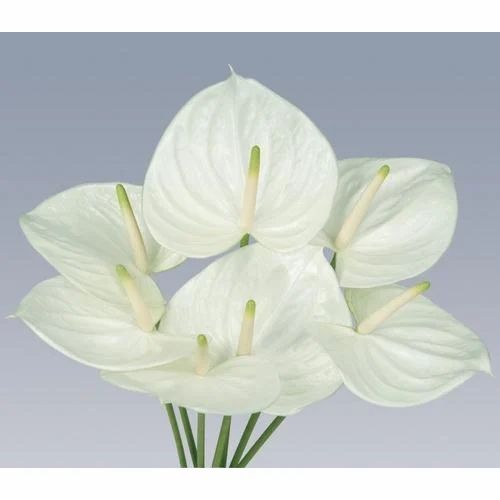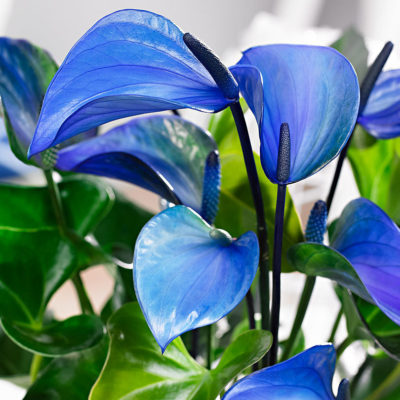Also called flamingo flowers for their unique tropical shape and bright red, green and white colors, they can bloom continuously for long periods making them delightful indoor plants all year round. The flowering varieties are distinctive for their colorful, heart-shaped waxy spades and red or yellow tail-like flower spikes. Other varieties have large-leaved, deeply veined foliage. Many anthuriums are climbers and all need high humidity and heat to thrive. Anthuriums usually live about 5 years indoors with proper care, but by propagating your plant you can have a healthy anthurium indefinitely. Anthurium is poisonous to humans and pets. 12
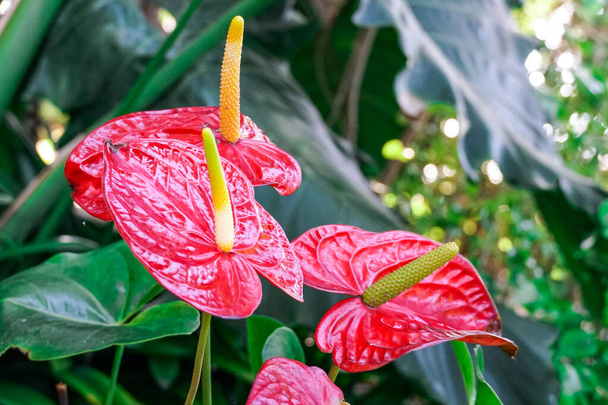
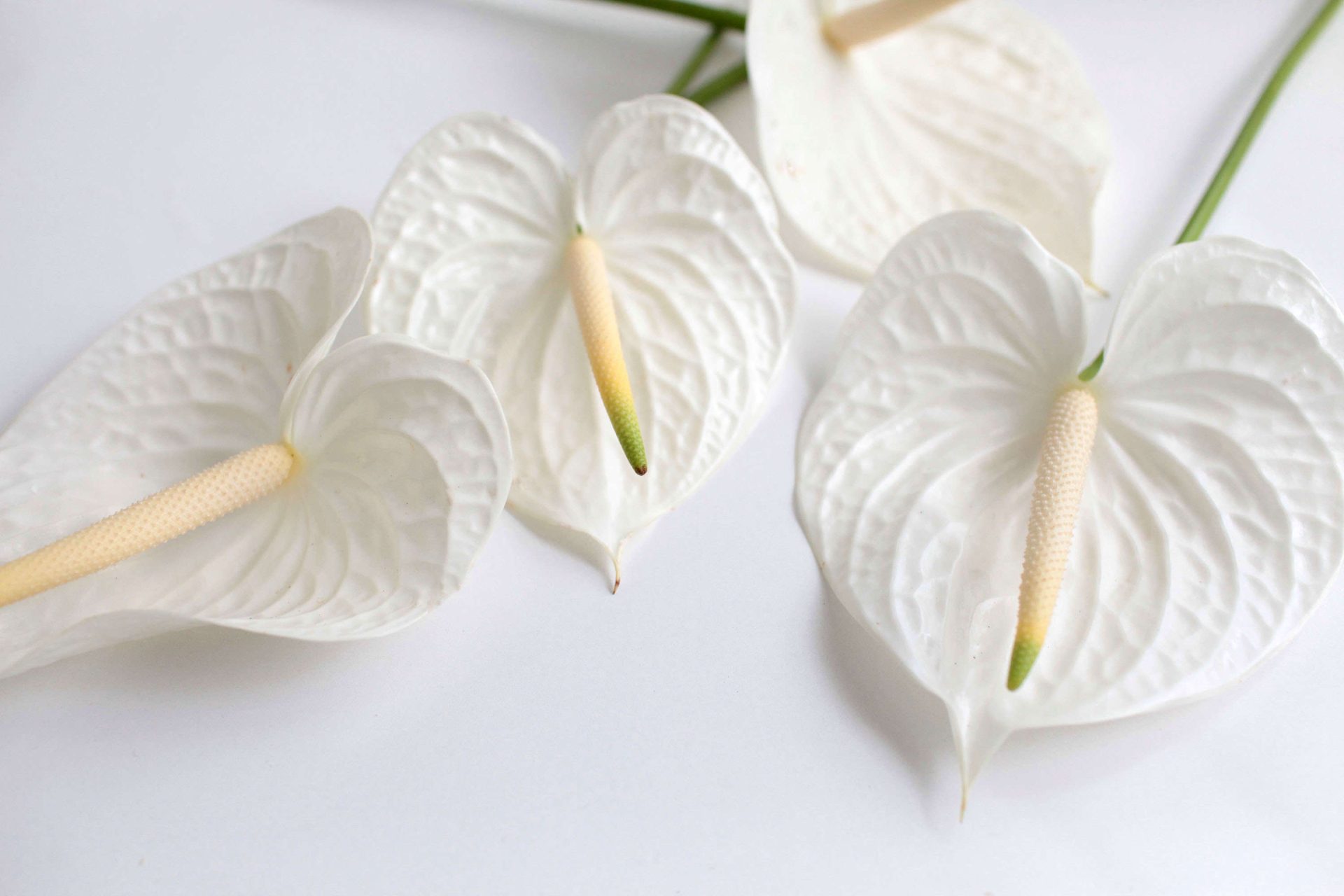
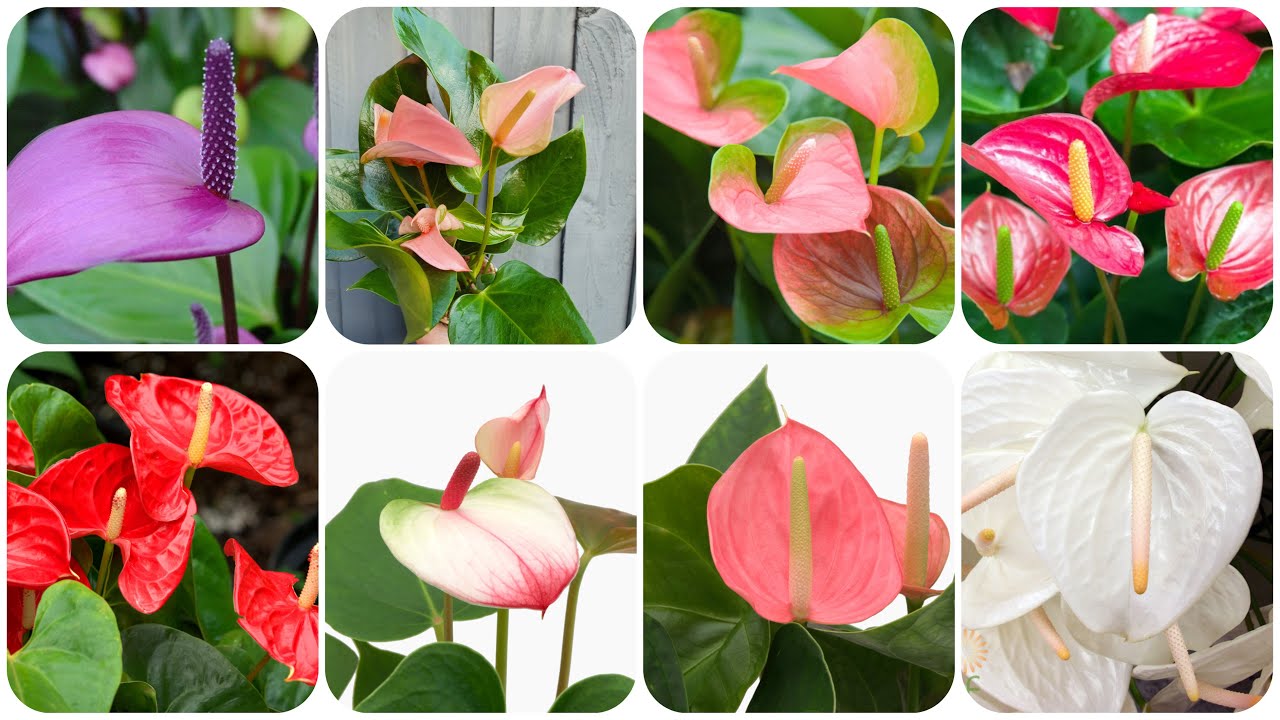
Anthurium plants thrive in bright, indirect light, and they do not like exposure to direct sunlight, except during the winter months or in plants that have been carefully acclimatized. Wild anthuriums generally thrive in temperatures at or above 60 degrees Fahrenheit, and the leaf types prefer temperatures even warmer. If the temperature drops below this level, the plant will suffer.
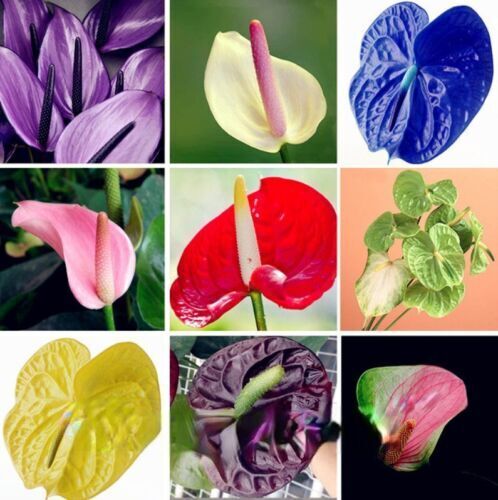
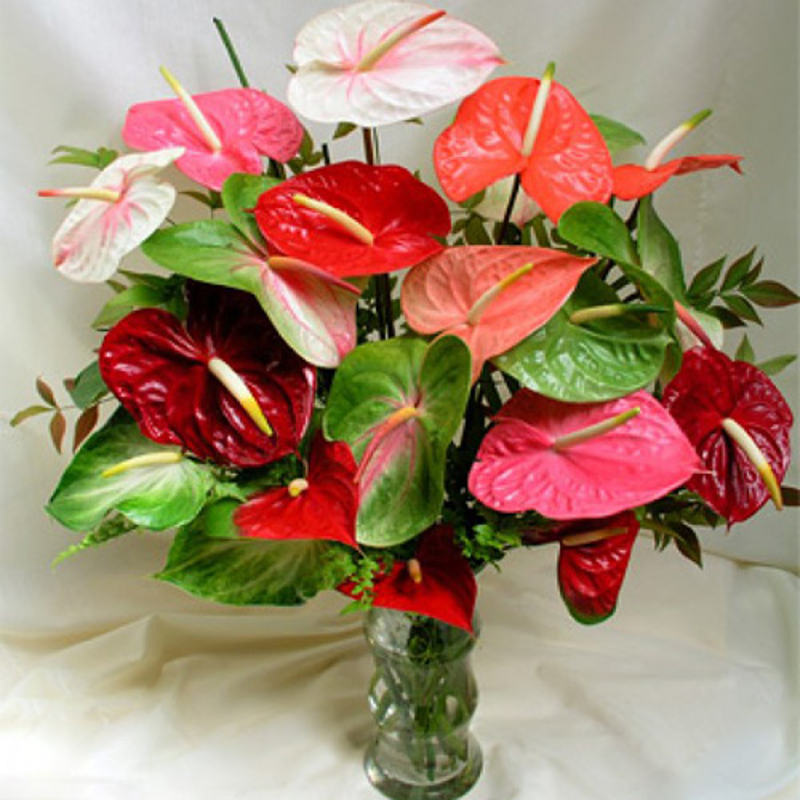
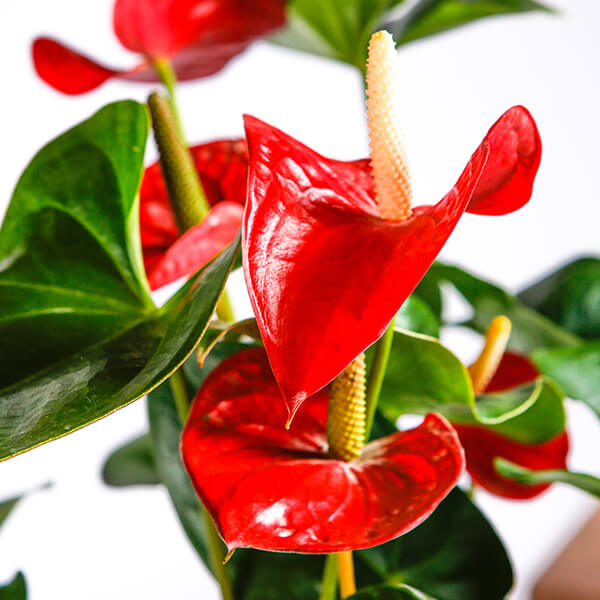
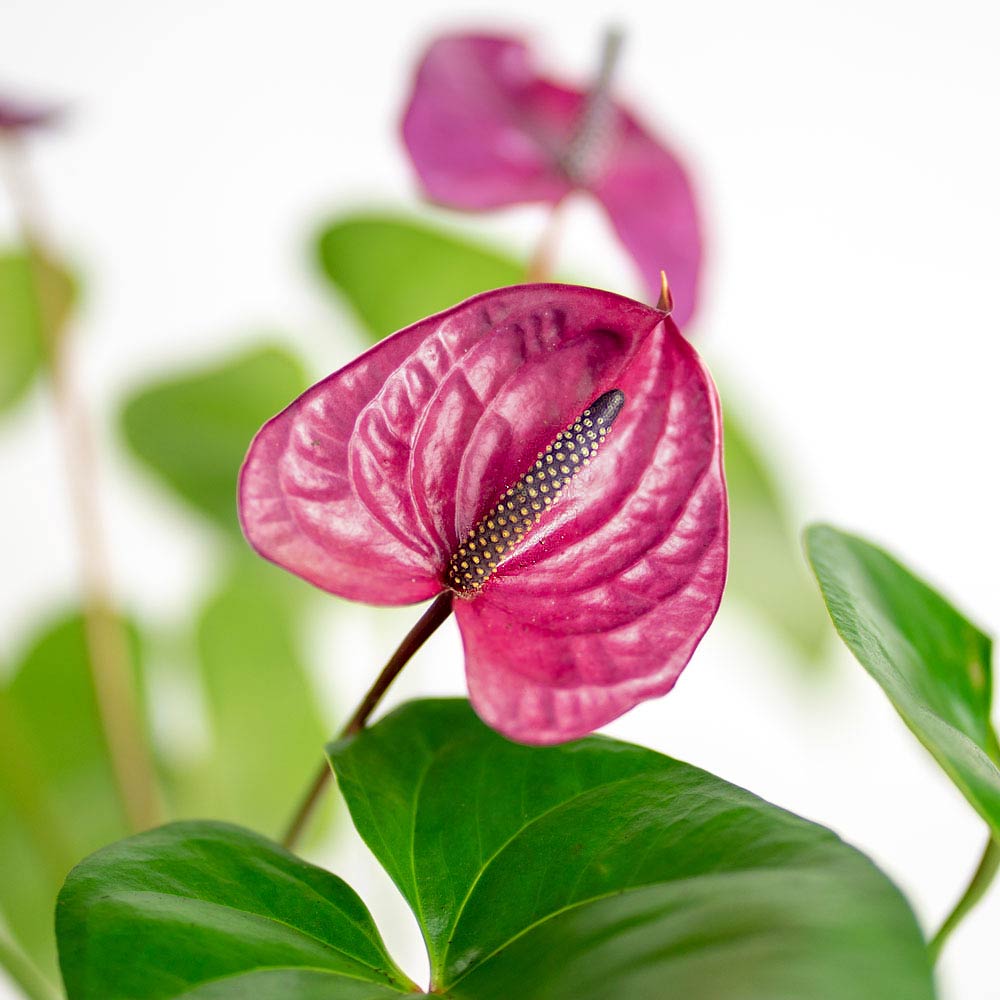
Potted anthuriums prefer a rich but well-draining potting mix that should be kept moist but not wet. Potting mix tailored for orchids, with a few handfuls of sand and a few handfuls of peat moss mixed in, is ideal.
LightIndoors or outdoors, anthurium likes sun more than shade. They grow best in bright, indirect light. Avoid direct sun.
SoilAnthurium prefers a coarse, well-draining potting mix. An orchid mix with additional sand and peat moss mixed in makes perfect soil for anthurium.

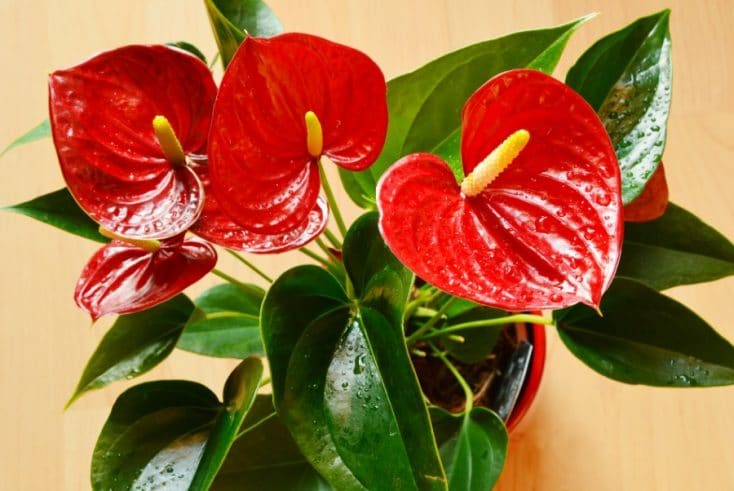
WaterThe soil should be kept slightly moist and never allowed to dry out completely. Place the pot in a tray with stones or gravel that has water. The plant’s water can run off there and help keep the humidity higher around the plant. Allow the top of the soil to dry out before watering again. Indoors, it’s about once a week. If outdoors, on hot days, it can be every two or three days between waterings.

